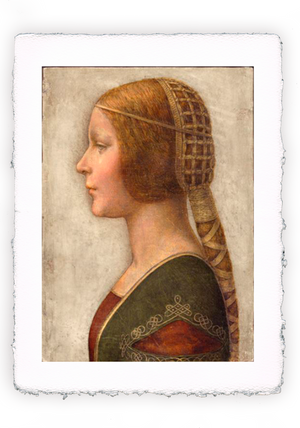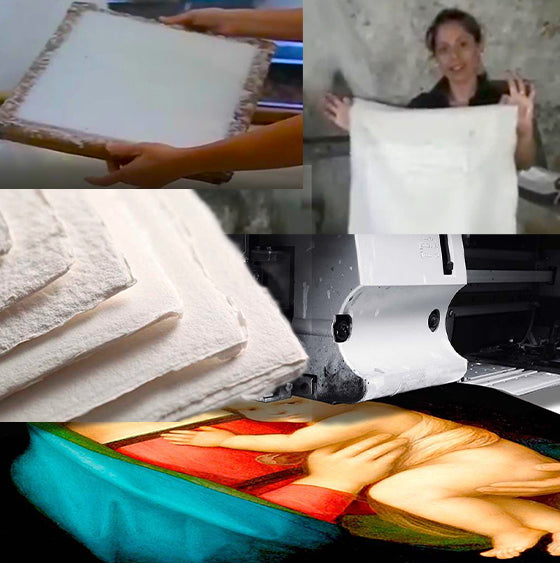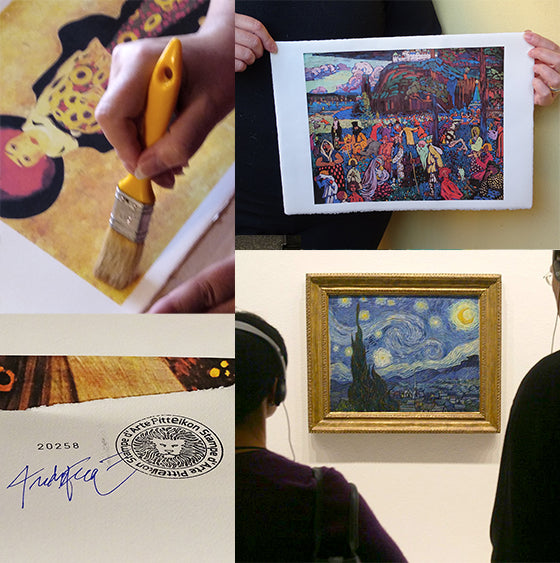
Print of Rembrandt - Dr. Nicolaes Tulp's Anatomy Lesson - 1632
Original price
€11,00
-
Original price
€97,00
Original price
€59,00
€73,00
€11,00
-
€118,00
Current price
€73,00

Rembrandt - Dr. Nicolaes Tulp's Anatomy Lesson
Year: 1632 - oil on canvas 216x169.5 cm
Preserved at: Mauritshuis, The Hague, The Netherlands.
There is no certainty about the number of works painted by Rembrandt. His particular way of painting, the use of different signatures over time, the habit of also signing paintings by his students have made life very complicated for the experts.
There are from 300 to 400 of sure attribution. 100 of which are self-portraits.
This uninterrupted production of “selfie” paintings tells us about Rembrandt's life in images, thanks to his introspective and communicative capacity.
It reminds me of the photos of Tian Jun and his son Tian Li who have photographed each other for about 40 years in the same pose every year; seeing the photos in succession creates emotion and makes you think.
Son of a miller
Rembrandt Harmenszoon van Rijn was born on July 15, 1606 in Leiden in the Netherlands. The miller father and the baker mother were well off and without any financial problems despite 10 children, of whom only 6 survived (Rembrandt was the fourth).
So Rembrandt enrolled at the University of Leiden, but his explosive talent leaves no way out and here he is in the workshop of one of the most important local painters, Jacob van Swanenburgh.
At the age of 21, together with a colleague, he already opens his own studio and even begins to take apprentices. Only two years later he met Constantijn Huygens, a statesman and poet who introduced him to the royal court in The Hague.
The prince continued to purchase his paintings until 1646.
The game is almost done. Rembrandt moves to Amsterdam, guest of the art dealer Hendrick van Uylenburgh, he married, almost smuggled, with his cousin Saskia. Thanks to Saskia's position there are no financial problems, but many personal difficulties.
Out of four children only one manages to survive (Titus) and then Saskia falls ill and dies in 1642, probably of tuberculosis.
Rembrandt's drawings of dying Saskia are among his most moving works.
Nothing in the right direction, except painting
From this moment the economic life of Rembrandt shoulder.
Nurse Geertje Dircx accuses the painter of not keeping his promise to marry her. In response, Rembrandt has her locked up in an asylum.
He enters into a relationship with his maid, which drew an official rebuke from the "Dutch Reformed Church" to the woman for "living in sin".
Rembrandt gets away with it because he is not a believer, but he is in debt precisely to some elders of the Church. Living beyond one's means presents its nefarious account.
Rembrandt loses the house, his printing press, his paintings and everything he had and he must take refuge from his son Titus, who declares him as his "employee" to protect him from creditors.
He survives his son and his partner who are killed by the plague and, after a year, on 4 October 1669 he too dies at 63 years of age.
Rembrandt "profiles"
The characteristic features of greatness in Rembrandt's painting can be summarized in two points:
- Use of light
- Extraordinary psychological communicativeness.
There is no doubt that Rembrandt drew heavily on the Caravaggio's lesson, very popular in the Netherlands at the time. The cuts of light and the gestures of the Dutch painter's characters closely resemble those of the great Milanese master.
His technique capable, at the same time, of making use of quick and light brushstrokes and of taking care of the smallest details create movement, animate the scene in a way never seen before, especially in the Nordic tradition.
But truly exceptional, from self-portraits to historical and genre paintings, is the psychological study. Each character is made to let us know who he is and what he is thinking. The face, the expression, the non-verbal communication of gestures and posture, down to the details of the clothing, are a whole story.
He had the ability to read the human soul and to know how to convey it in a drawing, in a painting.
He said, “Choose one teacher. The nature". And Rembrandt, from his teacher, never stopped learning.





